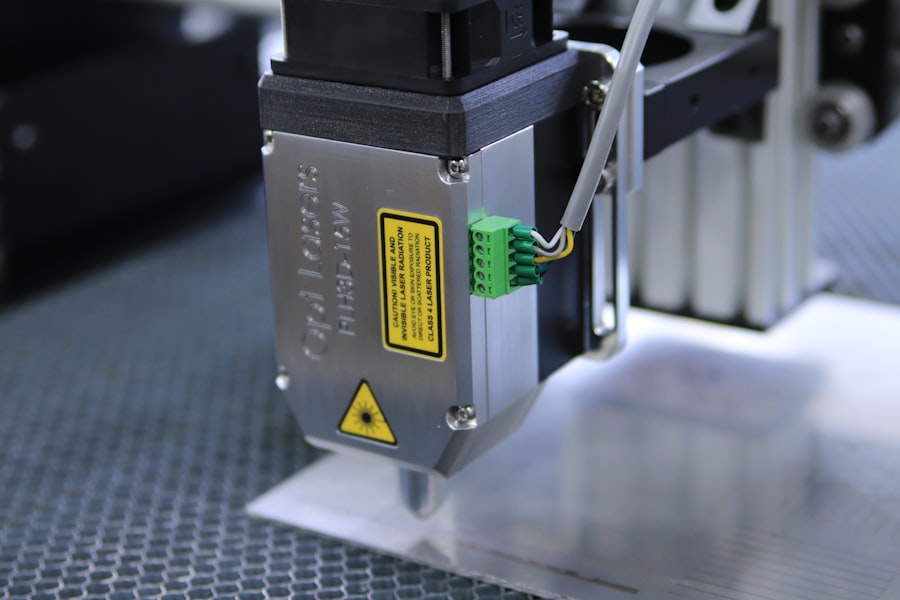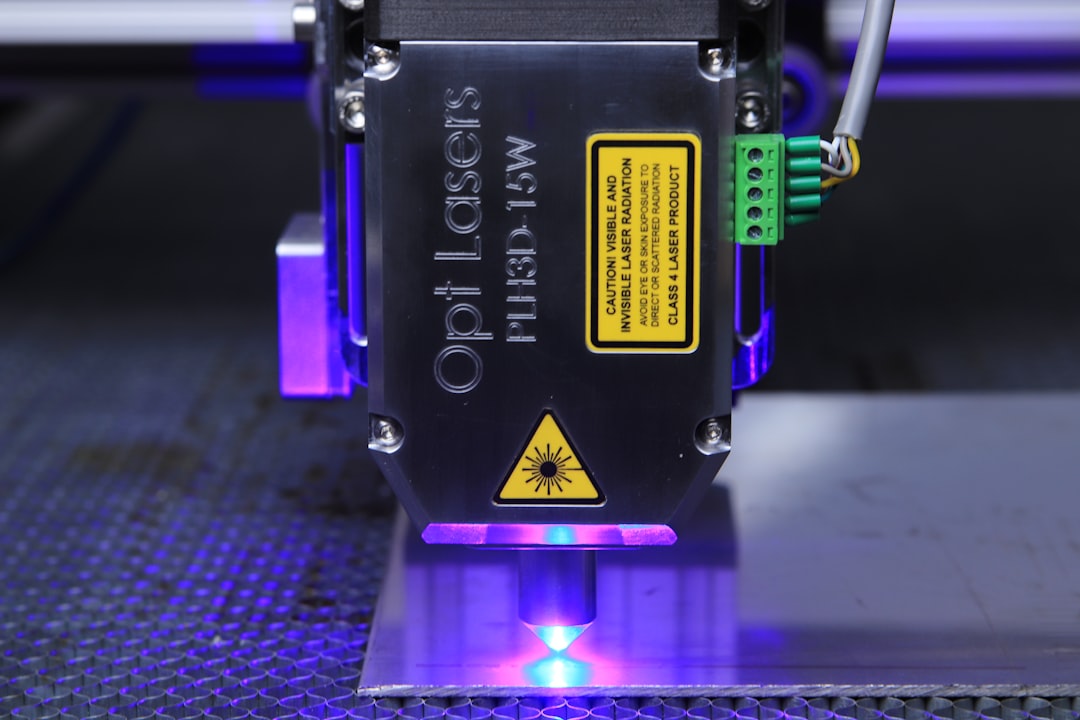When you think about hair removal options, Brazilian laser hair removal stands out as a popular choice for many seeking a long-term solution. This method utilizes concentrated beams of light to target and destroy hair follicles, effectively reducing hair growth over time. Unlike traditional methods such as shaving or waxing, which can be time-consuming and often lead to skin irritation, laser hair removal offers a more permanent solution.
You may find that this technique not only saves you time but also enhances your confidence by providing smoother skin in sensitive areas. The procedure itself is relatively straightforward. During your appointment, a trained technician will apply a cooling gel to the treatment area to protect your skin and enhance the effectiveness of the laser.
You will then wear protective eyewear to shield your eyes from the laser light. The technician will use a handheld device to deliver pulses of laser energy to the targeted areas. While some individuals may experience mild discomfort during the procedure, many describe it as similar to the sensation of a rubber band snapping against the skin.
Understanding this process can help you feel more at ease as you consider Brazilian laser hair removal.
Key Takeaways
- Brazilian laser hair removal targets hair in the bikini area, including the labia and perianal region.
- Factors affecting the number of treatments needed include hair color, thickness, and skin tone.
- Typically, 6-8 treatments are needed for effective Brazilian laser hair removal.
- Consistency in treatment sessions is crucial for achieving long-term results.
- Treatment plans should be adjusted based on individual needs and progress.
Factors Affecting the Number of Treatments Needed
As you embark on your journey toward smoother skin, it’s essential to recognize that several factors can influence the number of treatments you may require. One significant factor is your hair type and color. Darker hair tends to respond better to laser treatments because the contrast between the hair and skin allows the laser to target the follicles more effectively.
If you have lighter hair or fair skin, you may find that achieving optimal results takes more sessions, as the laser may struggle to identify the hair follicles. Another critical aspect to consider is your skin type. Individuals with darker skin tones may require specialized lasers that are designed to minimize the risk of skin damage while still effectively targeting hair follicles.
Additionally, hormonal factors can play a role in hair growth patterns. For instance, conditions such as polycystic ovary syndrome (PCOS) can lead to increased hair growth in certain areas, potentially necessitating more treatments for effective results. By understanding these factors, you can better prepare for what lies ahead in your Brazilian laser hair removal journey.
The Typical Number of Treatments for Brazilian Laser Hair Removal

On average, most individuals require between six to eight sessions of Brazilian laser hair removal for optimal results. However, this number can vary based on the factors previously mentioned, including hair type, skin tone, and hormonal influences. Each session is typically spaced four to six weeks apart, allowing your body time to shed treated hair and for new growth cycles to emerge.
This interval is crucial because laser hair removal is most effective during the active growth phase of hair. It’s important to remember that while six to eight sessions are common, some individuals may need fewer or more treatments depending on their unique circumstances. For example, if you have particularly coarse or dense hair, you might find that additional sessions are necessary to achieve the smoothness you desire.
Conversely, those with finer hair may see results more quickly. As you progress through your treatments, your technician will assess your progress and adjust your treatment plan accordingly.
The Importance of Consistency in Treatment
| Metrics | Importance |
|---|---|
| Patient Adherence | Consistent treatment leads to better patient adherence to medication and therapy regimens. |
| Therapeutic Effectiveness | Consistency in treatment increases the likelihood of achieving therapeutic effectiveness and positive outcomes. |
| Reduced Relapse | Consistent treatment reduces the risk of relapse in chronic conditions and mental health disorders. |
| Trust and Confidence | Consistency in treatment builds trust and confidence between patients and healthcare providers. |
Consistency is key when it comes to Brazilian laser hair removal. Sticking to your treatment schedule is essential for achieving the best possible results. Each session builds upon the last, targeting hair follicles in their active growth phase.
By committing to a consistent schedule, you can maximize the effectiveness of each session and minimize the number of treatments needed. Moreover, maintaining consistency helps ensure that your skin remains in optimal condition throughout the process.
Regular treatments allow your technician to monitor any changes in your skin or hair growth patterns, enabling them to make necessary adjustments to your treatment plan. This proactive approach not only enhances your results but also minimizes potential side effects or complications that could arise from inconsistent treatment.
Adjusting Treatment Plans for Individual Needs
Every individual is unique, and so are their hair removal needs. As you progress through your Brazilian laser hair removal journey, it’s crucial to remain open to adjustments in your treatment plan based on your specific requirements. Your technician will evaluate your progress after each session and may recommend changes based on how your skin and hair respond to the treatment.
This personalized approach ensures that you receive the most effective care tailored to your individual circumstances. For instance, if you notice that certain areas are responding more slowly than others, your technician might suggest altering the laser settings or increasing the frequency of treatments in those specific areas. Additionally, if you experience any side effects or discomfort during sessions, it’s essential to communicate this with your technician so they can modify your treatment plan accordingly.
By being proactive and engaged in your treatment process, you can achieve optimal results while ensuring your comfort and safety.
Monitoring Progress and Adjusting Treatment Plans
Monitoring your progress throughout the Brazilian laser hair removal process is vital for achieving long-term success. After each session, take note of any changes in hair growth patterns and discuss these observations with your technician during follow-up appointments. This ongoing dialogue allows for real-time adjustments to your treatment plan, ensuring that it remains effective and aligned with your goals.
In addition to tracking hair growth, pay attention to how your skin reacts post-treatment. Some individuals may experience temporary redness or swelling, which is typically normal and subsides within a few hours. However, if you notice any persistent irritation or unusual reactions, it’s essential to inform your technician immediately.
They can assess whether any modifications are needed in terms of laser settings or aftercare recommendations. By actively monitoring both your progress and any side effects, you can work collaboratively with your technician to achieve the best possible outcomes.
Potential Complications and Risks
While Brazilian laser hair removal is generally considered safe, it’s essential to be aware of potential complications and risks associated with the procedure. One common concern is skin irritation, which can manifest as redness, swelling, or even blistering in some cases. These side effects are usually temporary but can be uncomfortable.
To minimize these risks, ensure that you choose a qualified technician who uses appropriate equipment and techniques tailored to your skin type. Another potential risk involves changes in pigmentation. Some individuals may experience hyperpigmentation (darkening) or hypopigmentation (lightening) of the skin in treated areas, particularly those with darker skin tones.
This risk underscores the importance of selecting a practitioner experienced in treating various skin types and using lasers designed for safe application on all skin tones. By being informed about these potential complications and discussing them with your technician beforehand, you can take proactive steps to mitigate risks and ensure a smoother experience.
Achieving Long-Term Results with Brazilian Laser Hair Removal
In conclusion, Brazilian laser hair removal offers an effective solution for those seeking long-lasting hair reduction in sensitive areas. By understanding the process and being aware of factors that influence treatment outcomes, you can set realistic expectations for yourself as you embark on this journey. Consistency in attending scheduled sessions is crucial for maximizing results while allowing for necessary adjustments based on individual needs.
As you monitor your progress and communicate openly with your technician about any concerns or changes in your skin’s response, you’ll be better equipped to achieve optimal results. While there are potential risks involved, being informed and working with a qualified professional can significantly reduce these concerns. Ultimately, with dedication and proper care, Brazilian laser hair removal can lead you toward achieving smooth, hair-free skin that enhances both your confidence and comfort in everyday life.
If you are considering Brazilian laser hair removal treatments, it is important to understand how many sessions you may need to achieve your desired results. According to a recent article on In Laser Hair Removal’s website, the number of sessions required can vary depending on factors such as hair color, skin tone, and the area being treated. It is recommended to consult with a professional to determine the best treatment plan for your individual needs. For more information, you can visit their contact page or review their privacy policy here.
FAQs
What is Brazilian laser hair removal?
Brazilian laser hair removal is a cosmetic procedure that uses concentrated beams of light to remove unwanted hair from the bikini area.
How many Brazilian laser hair removal treatments will I need?
The number of Brazilian laser hair removal treatments needed varies from person to person. On average, most people require 6-8 sessions to achieve optimal results.
How far apart are Brazilian laser hair removal treatments scheduled?
Typically, Brazilian laser hair removal treatments are scheduled 4-6 weeks apart to allow the hair to be in the optimal growth phase for effective treatment.
What factors can affect the number of Brazilian laser hair removal treatments needed?
Factors such as hair color, hair thickness, skin color, and hormonal imbalances can affect the number of Brazilian laser hair removal treatments needed.
Are touch-up treatments necessary after completing a series of Brazilian laser hair removal sessions?
Some individuals may require occasional touch-up treatments after completing a series of Brazilian laser hair removal sessions to maintain long-term hair reduction.







